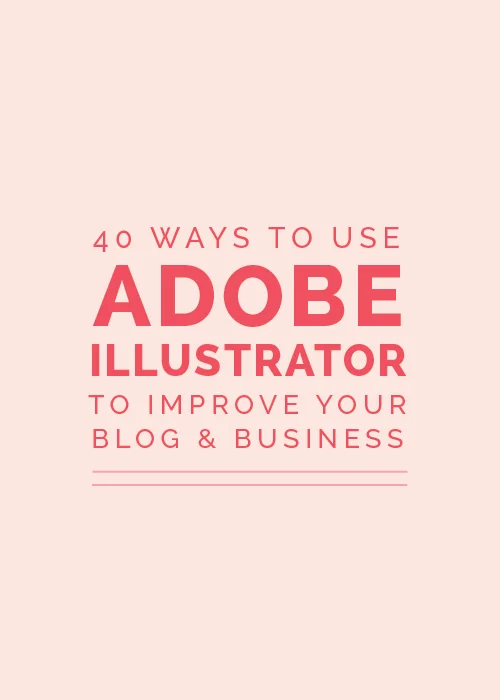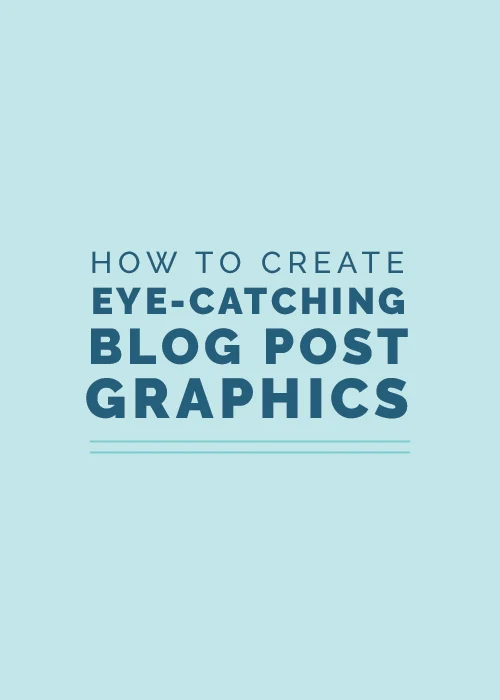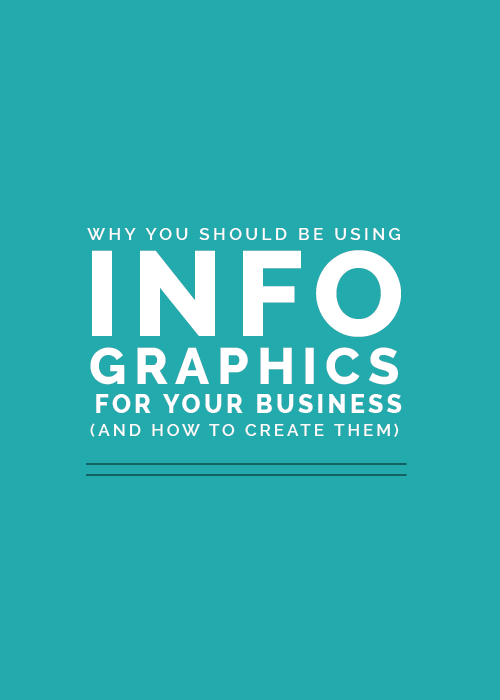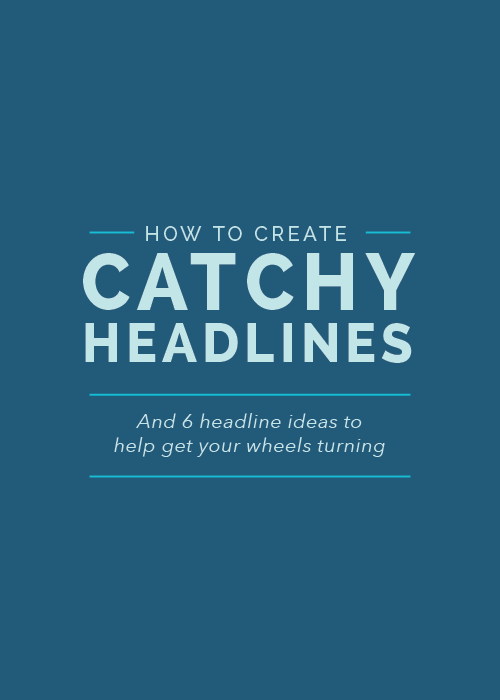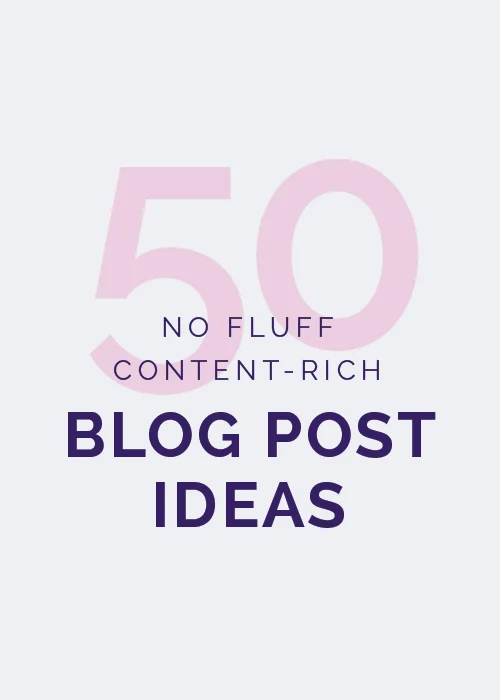While there's no right or wrong way to blog, great content is the key to blogging success. But share-worthy content isn't always easy to come up with or create, is it? Today I'm coming to the rescue with 50 blog post ideas that you can use to provide your readers with quality content and keep them coming back for more.
Top 10 Design Mistakes to Avoid
You've probably heard the popular quote "creativity is allowing yourself to make mistakes." Or perhaps you've heard "mistakes are proof that you are trying" or "every mistake can create a beautiful solution." While there is an element of truth in each of those sayings, it's wise to be well-informed and intentional about design if you're a blogger or a business owner. Visual mistakes have the potential to make you appear unprofessional and untrustworthy to your audience.
Today I rounded up my top 10 design mistakes that everyone should be aware of. While some of these rules have been broken and the result wasn't terrible, it's best to be educated on why these mistakes are bad and make them on purpose instead of by accident.
My Branding Field Guide

Create a streamlined visual brand with my free Branding Field Guide!
1 | Comic Sans
This is the number one no-no among graphic designers. Comic Sans is never ever ever a good idea. Why? Read this entertaining article.
2 | Too many typefaces
Using too many typefaces in a logo, website, etc. can make a design appear busy, non-cohesive, and unprofessional. Play it safe and stick to the KISS principle on this one; settle on 2-3.
3 | Lack of hierarchy
Hierarchy determines which items you see first in an image. Designers pay attention to hierarchy and use it to their advantage by varying the size of their fonts (titles and headers should always be more prominent than body text), using color wisely (pops of color draw attention to text and images that should stand out), and paying attention to shapes (which give a design movement and lead your eyes around the design). The use of several different fonts, colors, and shapes have the potential to mess with hierarchy, resulting in an image that is visually displeasing and complicated.
4 | No Contrast
Contrast also helps with hierarchy. A lack of contrast can alter legibility and make an image appear washed out and undefined. A mix of both light and dark colors creates balance.
5 | Dizzy color pairings
When objects with similar color values are placed near one another, it can sometimes have a dizzying, vibrating effect. Use contrast and be cautious of color pairings, especially when you are layering colors on top of each other.
6 | Lack of negative space
The negative space around an object is often just as important as the object itself; it provides a cushion and a place for your eye to rest. Avoid cramming objects and text into a design and be aware of the entire composition, not just the main components. Check out these 25 clever and creative uses of negative space!
7 | Centered paragraph text
Large amounts of text should never be center aligned. It alters legibility, making text harder and more frustrating to read.
8 | Failing to align objects/no grid system
Haphazardly placing objects on a page without rhyme or reason is never a good idea; it has the potential to make a design seem random and unintentional. Use a grid system and align objects to create order.
9 | Using display fonts as text fonts
Again, this is a legibility issue. Script, hand-drawn type, and other display fonts should be used for headers and small amounts of text. It's always a good idea to use a simple font for large groups of text.
10 | Upside down text
It's simply hard to read. Don't do it.
My Branding Field Guide

Create a streamlined visual brand with my free Branding Field Guide!
It's your turn! What are some of your biggest design pet peeves?
6 Reasons Why I Blog (and why you might want to, too!)
Last month I stepped back from projects and posts and had a little Elle & Company brainstorm session. It's good to have a business checkup once in a while, reevaluate, and ask the simple questions: What am I doing? Why am I doing it? How could I be doing it better? I thought through areas like my branding services (which are getting an update this week!), the 2015 planner (which is coming out in 2 weeks!) and the blog. And the more I started thinking through the Elle & Company blog, the more I realized how fundamental it's been for my business. Here's why.
1. Blogging allows me to share my design work
This seems obvious, but blogging is a great way for me to share recent projects and Library additions with readers and prospective clients. When followers see my work on the blog, they become more aware of my services and there is a greater chance that they might work with me down the road. I receive at least 2 design inquiries on the days when I post a new project, and most of the design inquiries I receive are from ladies who keep up with this space. Posting about recent Library additions also allows subscribers to see what's new in their printable collection and allows non-subscribers to see what they might be missing out on.
2. Blogging allows me to connect with other bloggers and business owners
There's a great little community in this blogging world. This outlet has given me so many great opportunities to connect and partner with other creative women, whether it's by cross-promoting, featuring, or just lending a word of encouragement.
3. Blogging is free marketing for my business
Technically it isn't "free" - time is money - but the hours I spend blogging during the week are well worth the great marketing that it provides for my business. Blogging allows me to post sharable content, create hype about new product launches and business events, and share new projects and Library additions, all of which keep visitors coming back to my site. My husband, Jake, said something a few months ago that continues to stick with me. Most storefront businesses don't have the same people coming into their shop day after day. Blogging keeps hundreds of people coming back through the Elle & Company "doors" day after day.
4. Blogging validates my credentials
My About page will tell you that I have a degree in graphic design, but this space allows me to prove my skills and my background. Readers and followers can see my experience for themselves when they see my posts on projects, design, and business.
5. Blogging gives me an outlet to share resources and content
My favorite bloggers are always willing to share what their talent/knowledge/creativity to benefit others in some way. This space gives me an awesome opportunity to do the same thing and "pass the baton". Tools and resources aren't meant to be hoarded; my blog is an outlet for sharing my gifts with others.
6. Blogging allows my clients, customers, and readers to get to know me
I was surprised to see the results of my reader survey a few months ago and see how much my readers love personal posts. But it makes sense - I love reading about the normal day-to-day lives of the people I follow along with. Blogging allows me to connect with my readers; it feels more personal than a quick "about me" section. It builds trust and friendships, and it always makes my day to receive feedback from readers who can relate with me in some way.
It's your turn! Why do you blog? How could a blog be helpful for your business?
4 Things I Wish I Had Known When I First Started Blogging
Last week I had the privilege of sitting on the guest panel at the Bloom Workshop, answering questions about blogging and design. One lady asked us what we wish we had known when we first started blogging. What a great question! Today I thought it might be insightful to share my answers for those of you who are considering starting a blog, too.
1. Blogging takes time
On average, it takes me 2-3 hours to write and prepare a single post. Multiply that by 5 days (and sometimes more if I post twice in one day) and you have a grand total of 15 hours a week. I'll admit, I probably spend a little too much time writing and editing my posts, but regardless, blogging is one of those things that takes more time than you originally think it will. My advice to new bloggers is to set the bar low when you're deciding how often you will post; you can always add more posts to your blogging schedule as you go. Set aside time to plan out your posts, come up with original content, take photos/design graphics, write, edit, publish, and share your posts on social media.
2. Don't post for the sake of posting
When I first started blogging, I had a lofty goal of posting once a day. It was a great goal - I post daily now - but I made the critical mistake of not planning out my blog posts. Instead, I would wake up each morning and scramble to find something to post that day. The result? Watered-down content that no one cared to read. If you're a new blogger or you're considering starting a blog, I highly recommend taking time to brainstorm and come up with quality content that benefits your audience in some way, whether it's through instruction, insight, or entertainment. Use a blog calendar (like this one) to map out your posts so that you aren't scrambling around last minute, posting for the sake of posting.
3. Offer something different
This one is extremely important! If you're hoping to start a blog and post about the same things everyone else is posting about, please reconsider. The most popular blogs out there gained popularity because they broke the mold and offered something different. Don't sell your creativity short by going along with what's already been done before; come up with an original idea that will set you apart!
4. The possibilities are endless
Blogging opens doors to partnerships, business opportunities, networking, advertising, product launches, book writing - you name it! I started blogging two years ago as a way to "scrapbook" events from college graduation and our wedding, and now I'm designing full-time, I've added on a little shop to my site, and I'm speaking to other ladies about blogging, business, and design. Get started, set goals, and always be brainstorming to come up with new ideas. The possibilities are truly endless!
For all of you seasoned bloggers, what do you wish you had known when you first started blogging? And for those of you who are just starting or are hoping to start a blog, what helpful topics would you like to read more about?

